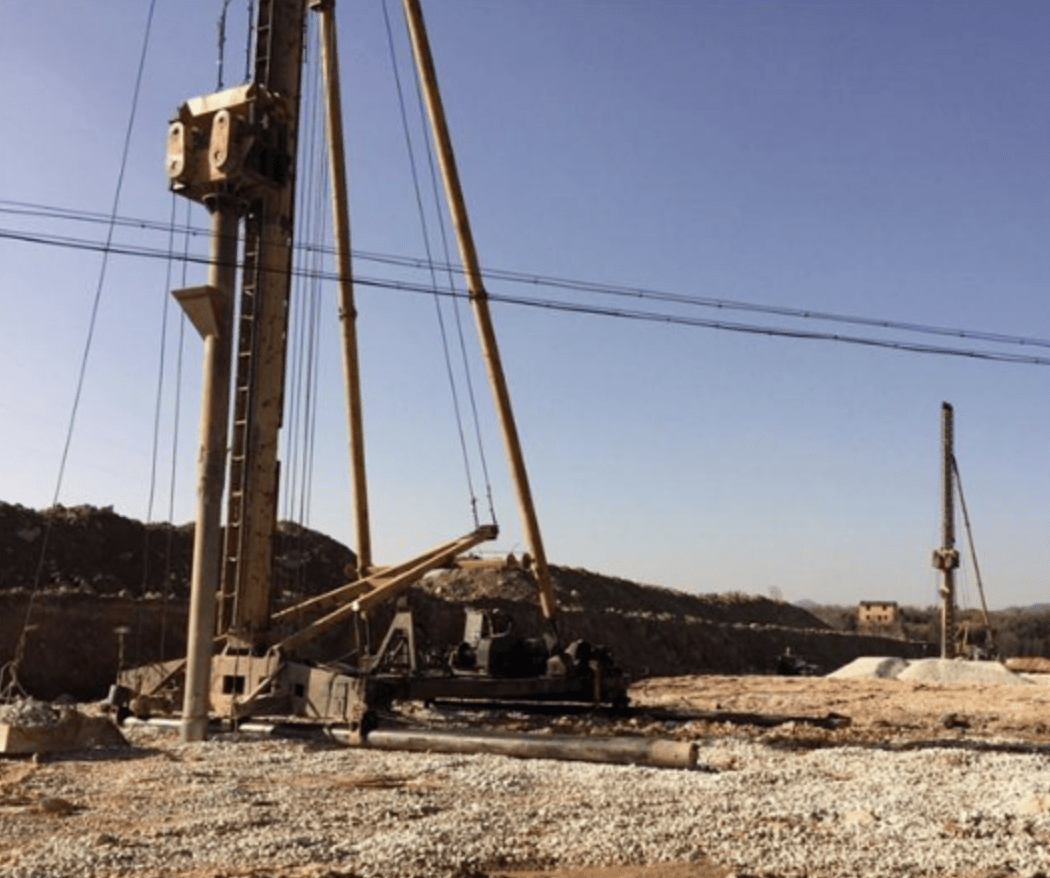 23
23
Site Preparation for Stone Column Construction
Before vibratory sunk pipe stone column construction, proper site preparation is essential:
Site Leveling
- Level the construction site to predetermined elevations based on topographic maps
- Follow the “fill rather than cut” principle during grading
- Remove surface obstructions to allow smooth vibrator penetration
- Establish onsite access roads, drainage systems (including blind ditches and longitudinal drains), and material storage areas
- Install lighting for potential night operations
Site Clearing and Excavation
- For dry, hard areas:
- Use bulldozers with manual support and loaders for removal
- Transport waste materials to designated disposal areas using dump trucks
- For low-lying, wet areas:
- Employ excavators for primary clearing
- Use manual methods where machinery access is limited
- Additional requirements:
- Remove all organic matter, debris, and topsoil (minimum 200mm depth) within embankment areas
- Ensure that clearing meets elevation requirements for stone column tops
Survey Layout and Column Arrangement
- Conduct survey measurements to re-establish centerlines and boundary markers
- Prepare a properly leveled ground surface with functional drainage
- Implement column arrangement according to design drawings
- Create and verify measurement layout diagrams with project supervision
- Mark all column positions clearly with numbered identifiers
- Conduct comprehensive technical briefings before commencement
Material Specifications
Vibro-replacement stone columns require:
- Clean, weathered gravel or crushed stone (natural gradation 1-2-3)
- Crushing value <32%
- Maximum mud content ≤10%
- Maximum particle size: 8cm (with >50% exceeding 5cm)
- Minimum particle size: 2cm
Construction Sequence for Stone Columns
The vibratory sunk pipe method employs a jumping pattern sequence:
- Sandy soils: Work from the perimeter inward with a row-skipping pattern
- Clayey soils: Progress from center outward in row-skipping fashion
- Minimum stone volume: 0.128m³/m per column
Step-by-Step Process:
- Site Preparation: Level and mark column positions
- Alignment Survey:
- Establish control points from the provided benchmarks
- Protect centerline markers appropriately
- Positioning:
- Mark column locations per specifications (≤2cm tolerance)
- Prevent marker disturbance during operations
- Equipment Setup:
- Align the pile machine vertically (≤1.5% deviation)
- Calibrate pipe length and feed openings
- Place the initial stone layer at the column base
- Vibratory Penetration:
- Lower pipe to design depth with 30-second pauses every 0.5m
- Slightly raise the pipe to open the bottom flaps
- Stone Feeding:
- Calculate volumes using theoretical values and fill factor (typically 1.02, minimum 0.95)
- Maintain consistent feed rates to ensure column uniformity
- Pipe Extraction:
- Begin withdrawal when stone fill exceeds 1/3 pipe length
- Use vibration during extraction (1.2-1.5m/min average speed)
- Implement 40cm re-penetration at 0.5-1m intervals with 30-60 second pauses
- Multi-stage Construction:
- Complete the first stage based on the design length
- Open the secondary feed port for additional stone
- Continue vibration during final extraction
- Surface Completion:
- Feed the remaining stone at ground level
- Apply pressure until the equipment lifts slightly
- Post-construction:
- Move the equipment to the next position
- Maintain a clean worksite
Surface Treatment
After completion:
- Install an 80cm gravel bedding layer over the columns
- Compact the entire area with a 20t vibratory roller (minimum two passes with overlap)
Quality Control Measures
Stone column quality is verified through:
Electrical Current Method
- Monitor lifting current or impact current
Comprehensive Parameter Method
- Vibration Parameters:
- Frequency: 24.5Hz standard
- Voltage: 380V±20V
- Excitation force: 280- 345kN (site-tested)
- Construction Controls:
- Stone feed height: 1-1.5m
- Densification current: Site-determined
- Vibration duration: 30-60 seconds (site-tested)
- Extraction rate: 1.2-1.5m/min (site-tested)
- Densification Techniques:
- Combine extraction vibration with pauses and re-penetration
- For upper 1-2m zones (reduced lateral confinement):
- Use the over-feed method
- Minimum stone volume: 0.2m³ per depth unit
Quality Assurance
- Reject columns showing:
- Discontinuities
- Insufficient stone volume
- Position deviations
- Strength deficiencies
- Defects (broken, necked, or settled columns)
This comprehensive approach ensures proper installation of vibratory stone columns for ground improvement applications, meeting all technical specifications and quality standards.

